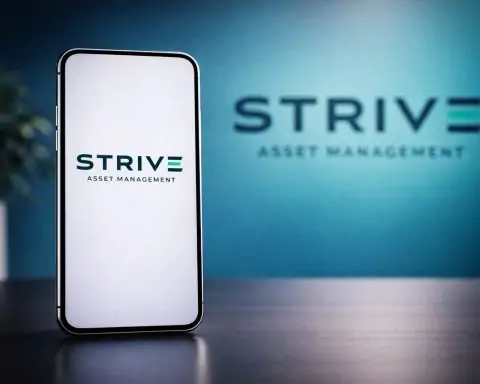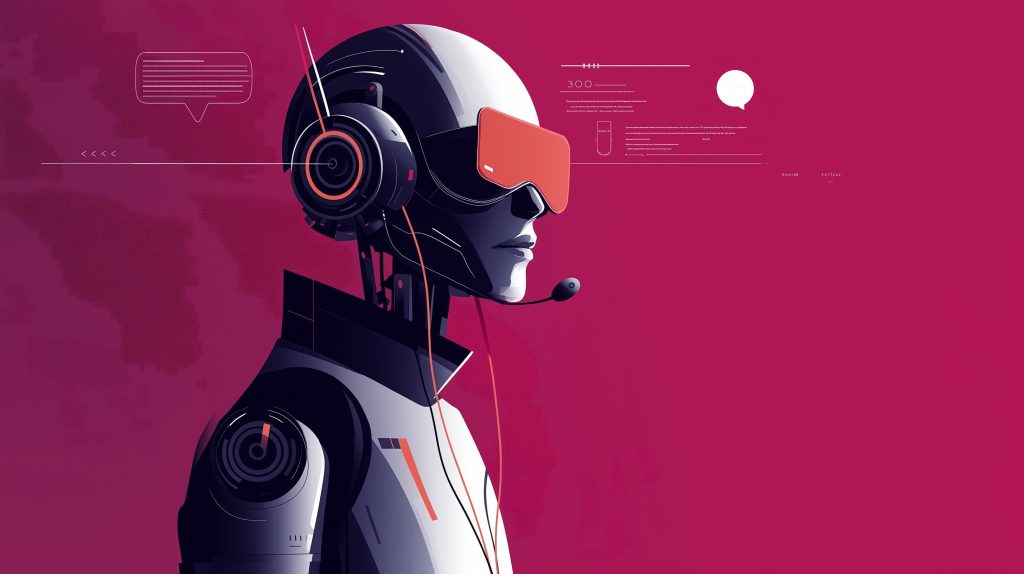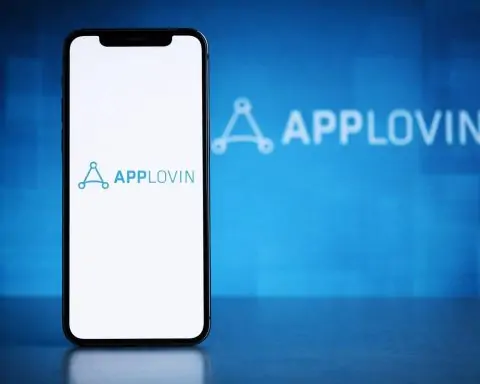- Hailuo AI, MiniMax’s free text-to-video app, went viral in 2025 for Cat Olympics clips, and in early summer 2025 launched Hailuo 02 with 1080p video and camera effects.
- PixVerse AI reached over 10 million downloads in 8 months and lets users turn a single photo into a short animated video, with GIF export options.
- AI kissing video generators such as DeeVid, Clipfly, and Pollo use deepfake-like tech to animate two photos into kissing clips and spiked searches for “AI kissing generator free”.
- AI Bigfoot surged in 2025, with AI-stabilized versions of the Patterson–Gimlin film and AI-generated Bigfoot vlogs with human-like voiceovers.
- Manus AI, launched around March 2025 by Monica.im, is a general-purpose AI agent that plans and executes multi-step tasks autonomously, offers a $39–$200/month invite-only beta, and reportedly surpassed GPT-4 on some benchmarks.
- Grok, Elon Musk’s xAI chatbot, originated in 2023 but surged in 2025 as people questioned cost and availability, described as a PhD-level, edgy alternative to ChatGPT.
- Unstuck AI, a study assistant that lets students upload PDFs, slides, and notes to ask questions with citations, had over 2 million users by 2025.
- DeepSeek’s R1 open-source LLM, 671 billion parameters with a 128k context, launched January 2025, its app topped the Apple App Store, and training was reportedly under $6 million, with Nvidia stock falling about 17% on the news.
- MiniMax released M1 in June 2025 as the world’s first open-source large-scale hybrid-attention model, featuring a 1,000,000-token context window and an estimated $534,000 to train, with plans for a Hong Kong IPO valued around $2.5–3 billion.
- PicLumen AI emerged as a leading free AI art generator by mid-2025, offering unlimited image generation without paywalls and allowing celebrity-name image generation.
Artificial intelligence has exploded into every corner of life in 2025. A flood of new AI tools, viral apps, and even controversies is capturing millions of searches. We’re seeing everything from whimsical AI-generated videos that dominate social media to powerful new AI models that challenge tech giants – and even public debates about pausing AI development. Below, we break down the most explosively trending AI topics of the year (based on search spikes), explain what they are, and why everyone’s talking about them.
Viral AI Video Generators Take Over Social Media
One of the biggest surges in interest has been for AI video generators that turn simple inputs into short, shareable videos. Hailuo AI is a prime example – this free text-to-video app from Chinese startup MiniMax suddenly went viral with its quirky “Cat Olympics” clips (yes, cats doing Olympic diving in AI videos) that racked up millions of views [1]. Hailuo’s newest model can simulate impressively realistic motion (fur splashes, physics, etc.) from a text prompt [2]. Tech writers note that while its quality isn’t quite Hollywood level yet, Hailuo “is rapidly gaining popularity among casual AI users” thanks to how fast and accessible it is [3]. In early summer 2025, MiniMax (Hailuo’s parent company) launched Hailuo 02 with big upgrades like full HD 1080p video and cool camera effects, firmly putting Hailuo in the race for top AI video tool of the year [4]. The kicker? Hailuo was completely free in its early days, and even now it retains a generous free tier (20–30 videos for new users) which one reviewer called “pretty high…making it one of the most giving AI video tools” [5] [6]. No wonder creators are flocking to it.
Hailuo isn’t alone. PixVerse AI – another text/image-to-video app – quietly amassed over 10 million downloads in 8 months, letting users turn a single photo into a short animated video “within seconds” [7]. These tools often come with preset effects and templates (PixVerse even lets you export as GIFs) to make video creation idiot-proof [8]. Reviewers have been blown away by how a simple image can “breathe life” into a mini movie via AI [9]. With such low barriers, it’s easy to see why AI-generated video memes and creative shorts are flooding TikTok, Instagram, and Reddit this year.
Perhaps the most surprising trending video apps are the “AI kissing video generator” tools. These services (with names like DeeVid, Clipfly, Pollo, etc.) use deepfake-like AI to animate two people kissing – often by taking two static photos and producing a (somewhat uncanny) romantic video. Ads for these have popped up everywhere (Reddit users have complained about the “AI Kissing video generator ads” invading their feeds [10]), usually promising heartwarming uses. One promo asks: “Looking forward to kissing your younger self, kissing your favorite celebrities, or reuniting with [someone]…?” [11]. Yes, these tools literally advertise letting you smooch a past version of you or a celeb crush in AI video form. It’s equal parts sweet and creepy – and undeniably viral. The phrase “AI kissing generator free” shot up in searches as people hunted for free versions of these novelty apps. While mostly a gimmick, it highlights how quickly AI can turn even our strangest imaginings into shareable clips. (It also raises some ethics flags: easy deepfake tech can be abused, and some platforms are working on policies to prevent misuse.)
Even bizarre crypto-paranormal niches are feeling the AI wave. Searches for “AI Bigfoot” spiked this year – a trend fueled by both serious uses of AI in analyzing Bigfoot evidence and tongue-in-cheek content. On the serious side, someone used AI to stabilize and enhance the infamous 1967 Patterson–Gimlin Bigfoot film, making it “pretty clear what it is” – basically a man in an ape suit [12] [13] (the AI-stabilized video revealed details like what looked like a belt buckle on the “creature”’s waist, bolstering the hoax theory [14]). But on the goofy side, creators on TikTok and YouTube have been using AI voiceover to make Bigfoot vlogs and comedy skits (hashtags like #BigfootBaddie and #BigfootVlogs trended). One viral video featured a faux “Bigfoot” vlogging about its day in a perfectly human-like (AI-generated) voice – a hilarious crossing of folklore and tech. Whether debunking mysteries or creating new memes, AI’s ability to generate compelling media has firmly taken root in internet culture.
The Rise of Autonomous AI Agents and Super-Assistants
Beyond fun videos, powerful AI agents and assistants are a massive trend. Take Manus AI – a new “general-purpose AI agent” launched in 2025 that has tech circles buzzing [15]. Unlike ChatGPT which just chats, Manus can plan and execute multi-step tasks autonomously, almost like an AI employee. Developed by a Chinese startup (Monica.im) and launched around March 2025, Manus promises to bridge the gap between human intentions and actions [16] [17]. In other words, you tell Manus a high-level goal and it figures out the steps and does them – whether it’s doing research, analyzing data, writing code, or booking appointments. Early reports claim Manus achieved state-of-the-art results on complex benchmarks, even surpassing OpenAI’s GPT-4 on some real-world problem-solving tests [18]. That led to “considerable market buzz” around Manus, positioning it as a potential leap beyond conventional chatbots [19]. It’s currently in invite-only beta (and yes, they started charging $39–$200/month for access due to high demand and server costs) [20]. The allure is clear: if Manus delivers, it could automate tasks that normally require an analyst, researcher or developer. No wonder “Manus AI” searches jumped over 1,100% – professionals are eager to see if this “digital autonomous assistant” lives up to the hype.
Not to be outdone, Elon Musk’s new AI venture xAI has rolled out its own chatbot named “Grok”, which also trended as people asked “what is Grok AI?”. Grok launched in late 2023 in limited beta, marketed as a rebellious, humor-infused answer to ChatGPT. By 2025, interest in Grok spiked again as Musk hinted at broader availability. Reports described Grok as a “PhD-level AI” with edgy attitude (apparently Musk told it to respond with a bit of wit and not be “boring”). Many users specifically searched how much Grok will cost – likely because Musk indicated it might be an add-on for X (Twitter) Premium subscribers. While still not mainstream, Grok symbolizes the growing field of specialized chatbots catering to particular audiences (in this case, those who want an uncensored, Musk-approved AI). It joins a crowded field of AI assistants: Claude 2 (by Anthropic) gained fans as a more verbose, safe chatbot; Perplexity AI became popular as a “ChatGPT with internet access” (answering questions with up-to-date info and citations); and open-source projects abound. The fact that “ChatGPT alternative” is perpetually trending shows people are hungry for new AI helpers – whether for better answers, fewer filters, or lower cost.
In education and personal productivity, AI copilots are becoming indispensable. One breakout hit is Unstuck AI, a study assistant that lets students chat with their course materials. Unstuck allows you to upload all your PDFs, slides, notes, etc., and then ask it questions like “Summarize Chapter 3” or “What did the professor say about quantum computing in Lecture 5?”. It will pull answers from your own materials, complete with citations to the source [21]. Over 2 million users (largely high school and college students) have flocked to Unstuck, making it one of the most popular EdTech AI tools [22]. Essentially, it gives you a personalized tutor 24/7 – no wonder queries for “AI homework helper” and “AI note taker” spiked. Similarly, tools like Napkin AI offer a kind of smart notepad for your ideas, and Notion’s AI integration lets you automate writing and brainstorming inside the Notion app. In 2025, if you’re a student or knowledge worker, there’s an AI for everything: summarizing articles, generating flashcards (AI flashcard maker searches jumped), even creating quizzes (e.g. “AI quiz generator” tools used by teachers). This trend is about AI making learning and work more efficient – basically giving everyone a tireless personal assistant or tutor.
Even creative professionals are seeing AI as a collaborator. For content writers, Rewritify AI became a hot tool – it’s an “AI humanizer” that can rewrite AI-generated text to sound more human and bypass AI detectors [23]. Why is that needed? Because as AI writing proliferates, so do AI content detectors – we’ve seen a huge uptick in searches for “AI checker” and “detect AI text”. Businesses and schools want to know if an essay or blog post was written by a human or ChatGPT. Rewritify cleverly markets itself as an “undetectable AI” rewriter, converting obvious AI text into something that won’t raise flags [24]. (How well it works is debatable, but its surge in popularity shows how many people – like students trying to outsmart Turnitin, or marketers trying to avoid Google penalties – are seeking to beat the AI detectors.) This cat-and-mouse between AI generation and AI detection is one of 2025’s intriguing subplots.
China’s New AI Powerhouses (MiniMax, DeepSeek, and Qwen)
Another major theme is the rise of Chinese AI models and platforms, which have seen astronomical growth. Two names stand out: DeepSeek and MiniMax.
DeepSeek AI – hardly known a year ago – suddenly burst onto the global scene by releasing a powerful open-source language model for a tiny fraction of the usual cost. In January 2025, DeepSeek (based in Hangzhou) launched its DeepSeek-R1 LLM and an accompanying chatbot app. Within days, the DeepSeek app shot to #1 on Apple’s App Store, even outranking the official ChatGPT app [25]. Users were astonished that a free, open-source Chinese model could perform on par with top Western models. When investors realized DeepSeek built R1 for “less than $6 million” (the company’s claim) versus the hundreds of millions spent on something like GPT-4 [26] [27], it triggered shockwaves. In fact, news of DeepSeek’s rapid success caused a stock market dip for US AI companies in late January: Nvidia’s stock plunged ~17% in a day after DeepSeek’s rise made people question the incumbents’ value [28]. DeepSeek’s strategy of open-sourcing (most of) its models and focusing on efficiency is clearly paying off. By May 2025, their assistant was reportedly handling 22 million user queries per day – staggering growth for a newcomer [29]. DeepSeek R1’s specs (671 billion parameters, 128k context) and especially its reasoning ability have drawn comparisons to GPT-4, with some benchmarks putting it in the same league [30] [31]. The message is clear: China’s AI labs are no longer playing catch-up; in some areas, they’re leading – and doing it more cheaply. No surprise that “DeepSeek R2” and related terms spiked as people anticipate its next moves.
Close on DeepSeek’s heels is MiniMax, another Chinese startup that’s had an incredible year. MiniMax might be familiar from earlier – it’s the parent company of the Hailuo video app – but it’s also building its own large language models. In June 2025, MiniMax unveiled M1, which it boldly called “the world’s first open-source large-scale hybrid-attention reasoning model.” In non-jargon, M1 is an AI model aimed at the same high-end reasoning tasks as GPT-4 or DeepMind’s Gemini – but MiniMax claims it trained M1 at 0.5% of the cost of those rivals [32]. They reported an almost unbelievable figure: only $534,000 to train M1 (thanks to clever techniques), versus an estimated $5–6 million for DeepSeek’s model and $100+ million for GPT-4 [33] [34]. If true, that’s a game-changer for AI R&D economics. M1 also boasts a record-breaking context window of 1,000,000 tokens [35] – roughly 8× the context of DeepSeek R1 and 8× more than even GPT-4’s extended version. In practical terms, M1 can ingest and reason over huge documents or multiple novels’ worth of text at once without losing the thread [36] [37]. That opens up wild possibilities (imagine an AI reading an entire law library or debugging a million-line codebase in one go). MiniMax says M1’s performance “approaches the leading overseas models” on many tasks, and Chinese analysts have noted it outperforms domestic models from Baidu or others in complex scenarios [38] [39]. Skeptics caution that these are company claims and need independent verification [40] – but the buzz is undeniable. MiniMax is now seen as one of China’s “AI dragons” (top startups), even reportedly planning a Hong Kong IPO. It raised a huge funding round led by Alibaba, valuing it around $2.5–3 billion [41]. Interestingly, MiniMax also has consumer products: it offers a chatbot called Kimi AI and, as we saw, powers creative apps like Hailuo. This full-stack approach (infrastructure + fun apps) means MiniMax touches multiple trending topics at once.
Speaking of Alibaba: their own model Qwen (Tongyi Qianwen) has been a trending name, too. Qwen is Alibaba Cloud’s LLM family, which achieved a milestone in 2024 by ranking #1 on Chinese-language benchmarks (and #3 globally) [42]. In 2025, Alibaba doubled down, launching Qwen 2.5 and then Qwen 3 as the race with startups like MiniMax and DeepSeek heated up. In fact, Reuters reported Alibaba “rushed out Qwen 2.5-Max” in January 2025 right after DeepSeek’s splashy debut, claiming its model was superior on key tests [43]. By April 2025, Alibaba unveiled Qwen 3 with new “hybrid reasoning” abilities, aiming to one-up everyone [44]. The rivalry in China’s AI sector is fierce – Baidu released Ernie 4.5, Tencent is backing another model – but Alibaba’s Qwen has the advantage of being open-source (for many versions) and backed by massive cloud resources. Qwen’s open versions (like Qwen-7B, Qwen-14B) have been downloaded tens of millions of times by developers [45] [46]. And Qwen isn’t just a text bot; Alibaba has multimodal models Qwen-VL (vision+language), Qwen-UV (audio), etc. One especially nifty thing: Alibaba showed Qwen-based agents that can control software and browsers, not just chat [47] [48]. This “agentic” AI concept is trending too (people searching if Qwen or others can automate PC tasks). All said, the surge in queries for Qwen and its capabilities underscores how China’s AI innovations are now globally relevant. English forums even discuss fine-tuning “liberated” Qwen models that answer without filters [49] [50]. For AI enthusiasts, Qwen is a reminder that the technology is no longer dominated by Silicon Valley – a lot of the action is in Beijing, Hangzhou, and beyond.
AI in Everyday Creativity: Art, Music and Design for Free
2025’s AI boom isn’t just about giant companies – it’s also in the hands of everyday creators. A huge driver of search spikes is the promise of free AI tools for image generation, design, and more.
On the visual art side, there’s been surging interest in tools to create images in specific styles. For instance, Studio Ghibli fans drove up searches for “Ghibli AI” and “Ghibli AI generator free”. People are using generative models to make their photos or artwork look like a Ghibli film still – big eyes, lush backgrounds and all. A number of websites popped up offering “free Ghibli-style AI art” (often based on fine-tuned Stable Diffusion models). Similarly, anime enthusiasts have been excited about models like PurpleSmart.AI’s Pony Diffusion or others that create anime/cartoon imagery [51]. Essentially, whatever your favorite aesthetic – Van Gogh paintings, Disney characters, 90s anime – there’s likely an AI generator specialized for that, often free to try. This has made art more accessible, but also created oceans of fan art and “AI mashups” flooding social media.
One platform that rocketed in popularity is PicLumen AI, a completely free text-to-image generator that many herald as a top alternative to Midjourney. Unlike Midjourney or DALL·E (which often require subscriptions or have limits), PicLumen has no paywalls – which is a huge selling point [52] [53]. Users can generate unlimited images in various styles (photorealistic, anime, digital art, etc.), do in-painting (touching up specific parts of an image), and upscale images – all without fees [54] [55]. It even explicitly allows generating images of celebrities by name [56] (something mainstream tools forbid). By mid-2025, PicLumen’s reputation as “the best free AI art generator” spread via countless TikToks and YouTube tutorials, leading to a spike of interest. “Better than Midjourney?” was a common refrain in those videos [57]. While that’s subjective, PicLumen showed that open-source models (running on the cloud) can produce impressively high-quality art. The barrier to entry for AI art is basically zero now – you don’t need technical skills or money, just a creative idea. As one AI news site noted, PicLumen “empowers anyone to create stunning visuals… without the financial burden” [58]. That democratization is a big theme of 2025’s AI trend: creativity is no longer gated by skill or budget, and people are loving it.
Besides images, AI is helping people design actual spaces and things. This year saw many folks searching for AI tools to design their rooms, yards, or even 3D-printable objects. Queries like “AI yard design free” and “AI landscape design” jumped as homeowners discovered they could upload a photo of their backyard and have an AI suggest landscaping ideas with rendered visuals. There are now free web apps where you can sketch a layout or describe your dream garden, and the AI will output a plan or even a before-and-after image. Similarly, “AI room design” tools let you remodel your living room in a photo – changing wall colors, furniture styles, etc., all virtually. These apps (some free, some freemium) became TikTok-famous, as people love seeing quick virtual makeovers. On the DIY side, the term “AI 3D print generator” trended from makers experimenting with AI-generated designs for 3D printing (e.g. you describe a gadget, the AI outputs a printable model). While still early, it hints at a future where physical design can be AI-assisted too.
And let’s not forget AI in music and audio – though not explicitly in the search list, 2025 has seen an explosion of AI cover songs and voice clones (e.g. “AI Drake song” went viral earlier in the year). The tech behind that – text-to-speech and voice cloning – overlaps with some trending terms. For example, Sesame AI is a startup that’s been all over tech blogs for creating ultra-realistic AI voice companions. They have virtual personas like “Maya” and “Miles” that you can have conversations with, and apparently their voices and speech mannerisms are so human-like that “you’ll forget you’re talking to an AI” [59]. Reviewers have said Sesame’s AI voices are “among the most human-sounding yet developed,” truly crossing the uncanny valley [60]. In fact, Sesame AI made headlines by open-sourcing its core voice model (a 1-billion-parameter speech generator) in 2025 [61]. That move both garnered goodwill and allowed developers to create new voice apps. The high interest in “Sesame AI” shows how far voice AI has come – beyond robotic assistants into something approaching conversational partners. (One can imagine future AI friends or therapists leveraging this tech.) We also see mainstream apps like Grammarly integrating AI to not just fix grammar but rewrite sentences, and Canva adding AI to generate images and copy for designs. In short, whether you’re making art, videos, designs, or written content, AI features are everywhere – often baked into the tools you already use.
Pop Culture Crossovers: AI Meets Fashion and Music
Not all trending “AI” topics were about artificial intelligence – in some cases, “AI” was literally someone’s name making news! A great example is Ai Yazawa x Uniqlo. Ai Yazawa (note the capital A, lowercase i – it’s a name, not an acronym) is the famed Japanese manga artist behind Nana and Paradise Kiss. In 2025, Uniqlo released a special UT t-shirt collection featuring Ai Yazawa’s manga artwork, to celebrate her 40th career anniversary [62]. This collab was huge for manga fans worldwide – the shirts included iconic characters and even a brand-new illustration of Nana just for Uniqlo [63] [64]. Searches for “Ai Yazawa Uniqlo” spiked leading up to the launch (which happened in early July 2025 [65]). It was a perfect pop culture moment: beloved manga + affordable fashion = internet buzz. Fans were not only looking up where to buy, but also discussing the designs, sizing (XS through 3XL, with some online exclusives) [66], and Ai Yazawa’s legacy. This reminds us that “AI” isn’t always about artificial intelligence – sometimes it’s just a person named Ai making waves in the trends.
Another non-AI “AI” was the query “I Ain’t Comin’ Back lyrics” – this refers to a hit song that trended. Specifically, country star Morgan Wallen teamed up with pop-rap icon Post Malone on a crossover track called “I Ain’t Comin’ Back” (often searched as “I ain’t coming back”). The song’s lyric video dropped in April 2025 and quickly trended on YouTube [67]. Fans searching the lyrics drove it up the search charts (likely because hearing Morgan Wallen and Post Malone on a song together was a big deal – blending country and hip-hop audiences). With its whiskey-soaked break-up theme and catchy hook (“Oh no no, I ain’t coming back…” [68]), the track gained a ton of airplay. So while unrelated to tech, it’s an interesting quirk that “AI” in lyrics (“I ain’t…”) ended up on a list of AI topics. It goes to show how pervasive the letters “AI” are – appearing in language, names, etc., sometimes confusing our trend data.
Facing the Downsides: AI Ethics, “AI Slop” and Calls for Caution
Amid the frenzy, 2025 has also been a year of sober reflection on AI’s risks and downsides. Several trending topics reveal growing public concern about where AI is taking us.
For starters, “AI moratorium” became a hot phrase after prominent voices in tech called for pausing advanced AI development. In March 2023, an open letter (organized by the Future of Life Institute) and signed by over 30,000 people – including Elon Musk, Steve Wozniak, and leading AI researchers – urged a 6-month halt on training any AI more powerful than GPT-4 [69]. They warned of potential dangers like AI-generated propaganda, mass job automation, and even “loss of control” over civilization [70]. That letter didn’t result in any pause, but it sparked a global debate. By 2025, the idea of an “AI pause” entered mainstream politics: we saw discussions of regulatory moratoriums, and in the EU some CEOs even asked to delay implementing certain AI laws for fear of hindering innovation. The search spike for “AI moratorium” indicates many people are grappling with the question: should we slow this down? Even OpenAI’s CEO Sam Altman and Microsoft’s President Brad Smith talked about the need for new governance before “superintelligence” by 2027 (a timeframe that itself drew attention – leading to interest in “AI 2027” scenarios, as discussed earlier). Overall, while 2023’s letter might’ve seemed alarmist to some, by mid-2025 concern over existential AI risks has moved from fringe to forefront.
Relatedly, terms like “AI job loss” are spiking as workers worry which jobs AI might eliminate. With GPT models now writing emails and coding, and robots getting smarter, fears of mass displacement are no longer theoretical. Studies in late 2024 suggested as many as 300 million jobs could be affected by AI automation worldwide. In 2025, we’re starting to see this anxiety reflected in search behavior. People are asking: Will AI take my job? What careers are safe from AI? Governments, too, are holding hearings on AI’s impact on employment. It’s a broad societal question that likely will only grow as an issue – but clearly it’s on a lot of minds this year.
Another emerging concern is AI’s environmental impact, specifically its surprisingly large water footprint. Yes, AI uses water – a lot of it – for cooling the giant data centers that train and run models. This fact hit the public consciousness recently when researchers calculated that ChatGPT guzzles up roughly a 16-ounce bottle of water for every 20-50 prompts processed [71] (mainly through the electricity and cooling needed in server farms). That statistic shocked people and went viral in Earth Day discussions. As AI adoption soars, the energy and water usage of models is becoming a hot topic (no pun intended). “AI uses water” and “AI environmental impact” trended as folks read articles about how data centers often pull millions of gallons from local water supplies. For example, Microsoft revealed its water use jumped by billions of liters in 2023 largely due to AI projects [72]. This has led to calls for more transparency and sustainable practices – and some startups are now focusing on “green AI” solutions. It’s a reminder that digital doesn’t mean impact-free; each chatbot response has a real-world footprint.
Perhaps the most visible downside of the AI content boom has been the rise of “AI slop” – a term coined to describe the deluge of low-quality, churned-out AI content now spreading across the web. By late 2024, tech journalist Casey Newton popularized “AI slop” to denote the flood of lazy AI-generated articles, images, listicles, spam sites, and social posts that feel like filler [73]. As one definition puts it, AI slop is “low quality media… made using generative AI” as cheap filler content [74]. In 2025, this concept hit mainstream awareness. People complain their Facebook feeds are full of weird AI-generated clickbait or YouTube has countless auto-narrated videos with robot voices – all symptoms of slop. It’s gotten to the point that Digiday and other industry outlets note it’s skewing media metrics and SEO, as unscrupulous actors pump out thousands of AI articles a day to game ad revenue [75]. The trend is so pronounced that “AI slop” itself became a trending search, reflecting digital marketers and regular users trying to understand this new garbage glut. Maggie Appleton, a UX designer, quipped that we’re seeing “mountains of crap” generated by AI polluting the web [76]. In response, there’s a push for “humanized” content (hence tools like Rewritify) and platforms adjusting algorithms to demote obvious slop. It’s an ironic twist: after years of worrying about AI becoming too smart, one immediate problem is AI being dumb at scale – flooding us with mediocrity. The battle for quality content is on.
Finally, we’d be remiss not to mention regulatory moves: Governments are waking up to AI issues. The EU’s AI Act is in the works, the U.S. is discussing AI bills, and even the G7 launched a code of conduct for advanced AI. In tech news, one notable development was the Biden administration securing voluntary commitments from AI firms to have their systems audited and to watermark AI-generated media. The public, via search trends, shows interest in AI regulation topics (though often in specific contexts like the “AI Act pause” asked by European CEOs). It’s clear the zeitgeist now recognizes AI as a double-edged sword – transformative yet requiring oversight.
In summary, the AI landscape in mid-2025 is exhilarating, unpredictable, and a bit chaotic. On one hand, we have explosive creativity and innovation: AI tools allowing anyone to generate art, videos, music, code, and more – often for free – which is empowering millions of users. New AI agents and models are emerging at breakneck speed, each pushing the envelope of capability (or cost-efficiency) and challenging the big players. The surge in trends like Hailuo’s cat videos, PixVerse, Manus, DeepSeek, and MiniMax shows an industry evolving faster than ever before. But on the other hand, we see society grappling with AI’s implications: Is the content authentic or just slop? Will AI help us or replace us? How do we stay in control of something growing so powerful? The fact that an expert scenario predicting crisis-level AI developments by 2027 went viral [77] [78], and that thousands of researchers literally begged for a development pause, underscores the mix of awe and anxiety. As one open-letter signatory put it, there are “too many ways these systems could be abused” if we’re not careful [79].
Yet, even with these concerns, the genie is out of the bottle. Artificial intelligence is now a part of daily life – as common in conversation as the internet or smartphones. The trending topics above make one thing obvious: whether it’s through fun apps like an AI that “kisses” or serious advances like a million-token AI brain, people everywhere are engaging with AI like never before. It’s an exciting time, a scary time, and above all, an extraordinarily interesting time to be alive. As 2025 unfolds, expect the AI world to continue evolving rapidly – and keep an eye on those trending searches, because they’re the collective heartbeat of our relationship with this technology. The AI revolution is here, and it’s touching everything. [80] [81]
Sources: The analysis above incorporates information from a wide range of experts and reports. Key references include tech news articles (e.g. on Hailuo’s viral videos [82], Manus AI’s capabilities [83], DeepSeek and MiniMax’s model breakthroughs [84] [85]), industry research (e.g. the “AI 2027” expert scenario [86] [87]), and even Wikipedia summaries (for the AI pause letter [88]). We’ve also cited statements by those directly involved – e.g. Alibaba’s announcements about Qwen [89], and observations from journalists like Casey Newton on “AI slop” [90]. These sources are linked throughout the text for further reading and verification. In a world awash with AI hype, grounding claims in reputable sources is more important than ever – hopefully this report provides both exciting insights and trustworthy context on the year’s top AI trends.
References
1. ts2.tech, 2. ts2.tech, 3. ts2.tech, 4. ts2.tech, 5. ts2.tech, 6. ts2.tech, 7. www.reddit.com, 8. play.google.com, 9. apps.apple.com, 10. www.reddit.com, 11. www.clipfly.ai, 12. www.iflscience.com, 13. www.iflscience.com, 14. www.iflscience.com, 15. www.baytechconsulting.com, 16. www.baytechconsulting.com, 17. www.baytechconsulting.com, 18. www.baytechconsulting.com, 19. www.baytechconsulting.com, 20. www.baytechconsulting.com, 21. unstuckstudy.com, 22. www.raindrop.ai, 23. rewritify.ai, 24. rewritify.ai, 25. www.techtarget.com, 26. www.techtarget.com, 27. www.techtarget.com, 28. www.techtarget.com, 29. www.demandsage.com, 30. www.techtarget.com, 31. www.techtarget.com, 32. www.computerworld.com, 33. www.computerworld.com, 34. www.computerworld.com, 35. www.computerworld.com, 36. www.computerworld.com, 37. www.computerworld.com, 38. www.computerworld.com, 39. www.computerworld.com, 40. www.computerworld.com, 41. www.benzinga.com, 42. en.wikipedia.org, 43. www.reuters.com, 44. www.reuters.com, 45. en.wikipedia.org, 46. en.wikipedia.org, 47. www.reuters.com, 48. www.scmp.com, 49. en.wikipedia.org, 50. en.wikipedia.org, 51. www.technology.org, 52. www.toolify.ai, 53. www.toolify.ai, 54. www.toolify.ai, 55. www.toolify.ai, 56. www.toolify.ai, 57. www.youtube.com, 58. www.toolify.ai, 59. sesame-ai.pro, 60. www.rdworldonline.com, 61. www.perplexity.ai, 62. www.tokyoweekender.com, 63. www.tokyoweekender.com, 64. www.tokyoweekender.com, 65. www.tokyoweekender.com, 66. www.tokyoweekender.com, 67. www.youtube.com, 68. www.youtube.com, 69. en.wikipedia.org, 70. en.wikipedia.org, 71. www.watertechnologies.com, 72. www.forbes.com, 73. www.meibel.ai, 74. mail.cyberneticforests.com, 75. digiday.com, 76. www.harrisonpensa.com, 77. www.centeraipolicy.org, 78. www.centeraipolicy.org, 79. en.wikipedia.org, 80. www.centeraipolicy.org, 81. en.wikipedia.org, 82. ts2.tech, 83. www.baytechconsulting.com, 84. www.techtarget.com, 85. www.computerworld.com, 86. www.centeraipolicy.org, 87. www.centeraipolicy.org, 88. en.wikipedia.org, 89. www.reuters.com, 90. www.meibel.ai










